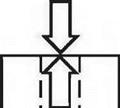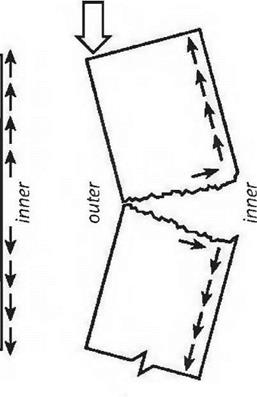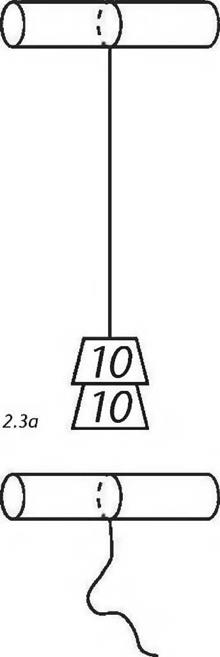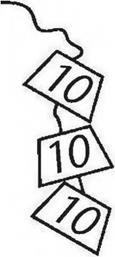Compression
Compression — in wood, not my father’s car engine — can be thought of as the tendency to crush or compress under a load. The actual crushing or compressing does not have to be measurable to be real. If 1 stand on a stout — say, 12-inch diameter by 12-inch high — oak chopping block, my weight puts that chopping block in compression, even though I am having no measurable impact upon it. My entire family could balance atop the block to no effect, yet the block is definitely in compression. It might seem that such a stout block would never fail under compression, and yet it can under extreme circumstances. In October of 2003, Jaki and 1 rotated a 20-foot long 20-ton stone on a 12-inch-wide pivot made of a dense hardwood, an incredible concentrated load. Yes, the pivot eventually failed — it was crushed and ruptured apart, finally — but we did manage to swing the stone through almost 90 degrees of arc before it did.
The stresses on posts or columns are due mostly to compression, particularly if the line of thrust from above is straight down through the center of the post, as in Figure 2.2a. (Our chopping block example, incidentally, is simply a short stout post.) However, if the line of thrust wanders out of the middle third of a post — or a wall — then the side of the post or wall where the load is concentrated is in compression, while the side away from it is in tension.
(Fig. 2.2b).
|
Fig. 2.2a: The line of thrust is in the middle third of the wall. The reactionary thrust is in compression. Fig. 2.2b: The line of thrust has wandered into the outer third of the wall, still under compression, but the inner surface is on tension and the wall is unstable. Fig. 2.2c: The line of thrust has left the confines of the wall, which now buckles and fails. |
|
о |
|
& з о |
|
cu c c |
|
Tension can be thought of as the opposite of compression. While compression wants to squish the molecules of a material together, tension is trying |
|
из |
|
УЗ |
|
1/3 |
|
1/3 |
|
1/3 |
|
1/3 |
|
Ar |
|
Лг |
|
2.2a |
|
2.2b |
|
2.2c |

![]()


![]()

 to stretch the molecules apart. If I hang lead weights on a string, the string is in tension. If I keep adding more lead weights until the tensile strength of the string is exceeded, we will observe a failure in tension: the string breaks.
to stretch the molecules apart. If I hang lead weights on a string, the string is in tension. If I keep adding more lead weights until the tensile strength of the string is exceeded, we will observe a failure in tension: the string breaks.
If the line of thrust actually leaves the edge of the support structure, as per Fig. 2.2C, the member will hinge somewhere along its height and something — like the upper story or the roof — will come crashing down.
While writing the above paragraph, I envisioned a building failing in the way described. It happens, particularly with old abandoned buildings under a severe load, such as heavy snow or strong wind. It occurred to me that the failed building lands up in some kind of an untidy heap, which, in and of itself, is actually a new structure, one designed instantly by the physics that apply near the surface of this planet. If you looked carefully at the resultant pile of twisted and broken timbers, you would see a structure with new lines of thrust being distributed along tension and compression, and by way of natural triangles and trusses. Such a pile might be weak, only able to support itself for a short time, or it might be surprisingly strong. An old barn building near us has been slowly receding into the landscape for 25 years.
We’ll talk more about posts later, but I think it would be helpful to consider beams first, because posts, surprisingly, share some of the same characteristics as beams.






Leave a reply